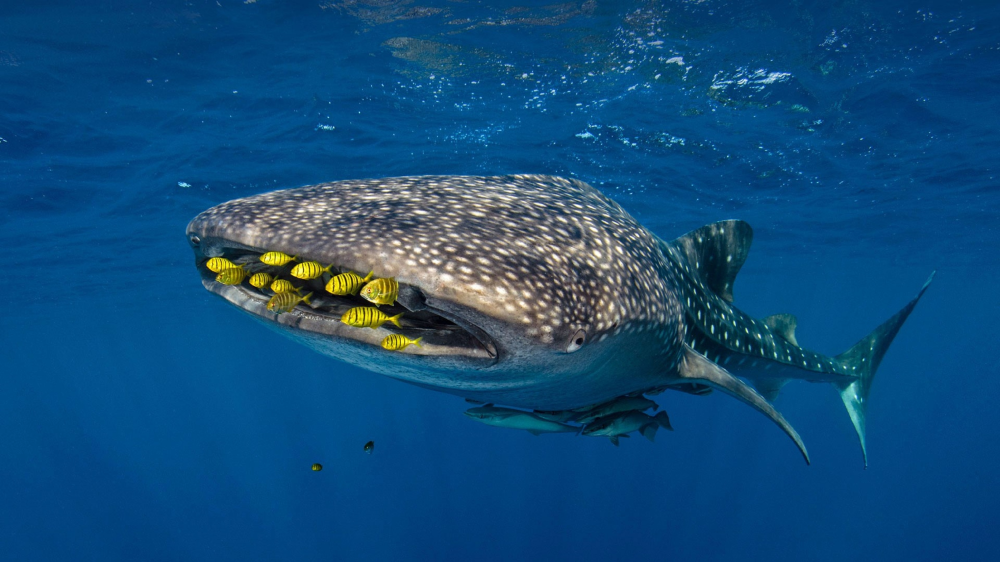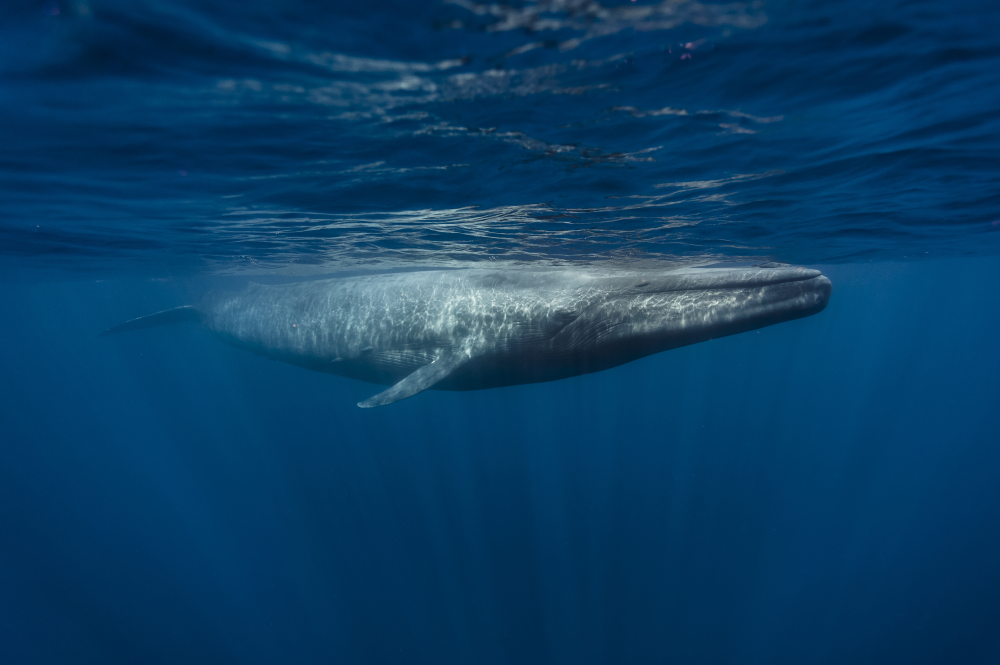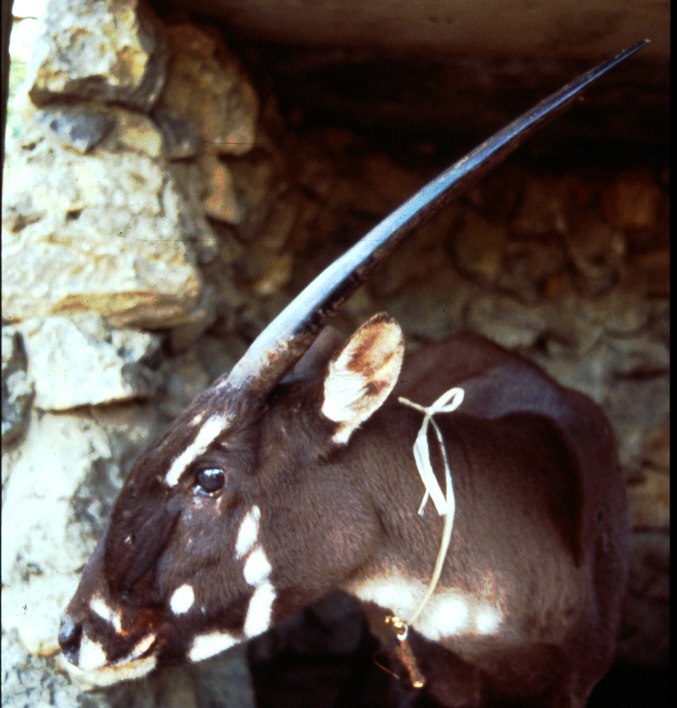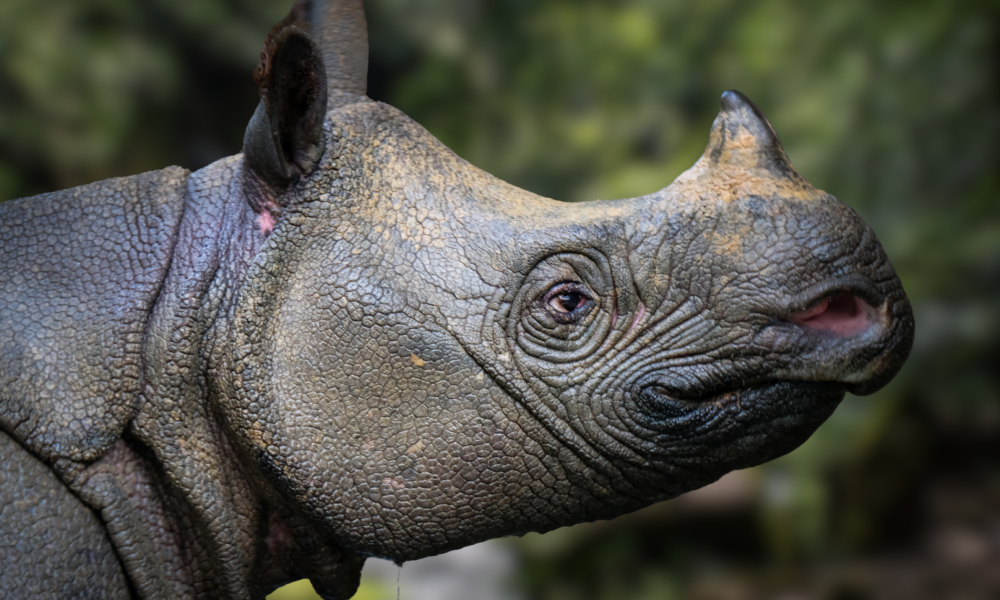Eel reproduction was a famous animal mystery that was solved back in 2022, but did you know that there are lots of animals that humans have never seen give birth? For some species like snow leopards, we’ve been able to witness births in captivity, but for other animals we don’t have the first clue where their babies come from.
In the case of deep-sea species like Architeuthis dux, it’s hardly surprising – after all, who’s got time to travel down 1,000 meters (3,280 feet) to find out. But what about animals like the saola, better known to some as the “Asian unicorn”? From horned mammals to the biggest fish in the world, there are some animal birth mysteries that are more surprising than others.
Great white shark, Carcharodon carcharias
In 2024, the world was treated to an incredibly rare piece of footage. A drone is believed to have captured a newborn great white shark on camera for the first time. As the largest surviving fish to feed on something bigger than krill, you might expect that finding out where these oceanic behemoths give birth wouldn’t be so hard, and yet this is the closest we’ve come to seeing where baby great whites come from.
The great white caught on camera was just 1.5 meters (5 feet) long, the expected length for a newborn, and appeared to be shedding a white layer from its body as it swam. While they can’t rule out that it was a juvenile with some kind of skin condition, it’s possible the small great white was shedding intrauterine substances having just been born. The sighting of some large, possibly pregnant, sharks in the days before could support this idea, and would make it the first time a newborn great white has ever been seen alive.
The waters off Santa Barbara, California to north Baja California in Mexico, have previously been suggested as a possible site where great whites give birth. At time of writing, however, the birth of a great white shark has never been observed by humans.
Whale sharks, Rhincodon typus

Where does the biggest fish in the world give birth? Nobody knows.
Image credit: Animalgraphy / Shutterstock.com
The title of largest fish in the world goes to the whale shark, a krill-eating giant that can grow to around 20 meters (66 feet) in length, and weigh 20 tonnes. According to the Galapagos Whale Shark Project, 21 whale shark neonates (newborn pups) have been seen in the wild, but nobody has ever seen a whale shark give birth.
The first ever wild whale shark ultrasound was achieved in 2018 by a team of scientists wielding a handheld probe off the Galápagos Islands. They were drawn to scanning the whale sharks here because most of them were female with swollen abdomens, but all they were able to spot were ovaries and unfertilized eggs.
The Ningaloo Reef in Australia has also been flagged as a possible breeding or birthing ground for whale sharks, as they congregate here in large numbers each year following coral spawning and plankton blooms. Finding definitive answers for these massive animals is made all the more tricky because they sometimes dive down beneath the reach of tracking devices (as far as 2,000 meters or 6,600 feet) – so are these crucial behaviors taking place beyond our technologies’ reach? For now, it remains a mystery.
Blue whale, Balaenoptera musculus

We’ve not seen blue whale birth, but we have seem them battling it out for a mate.
Image credit: Andrew Sutton / Shutterstock.com
The world’s biggest mammal, and possibly the largest animal to have ever existed, has also so far evaded our prying eyes when it comes to giving birth. We have, however, caught them performing the world’s largest mating dance on camera and hoo boy – was it quite the show.
The “battle royale” involved a group of males pursuing a female as they used their bulk to try and knock out the competition. Known as a racing group, they’ve been spotted in other whale species a few times but the observation off the coast of South Australia was a world-first for blue whales.
Rare observations for blue whales have included a calf nursing, and we know that the newborns come out big – topping weights of around 2,200 to 2,700 kilograms (5,000 to 6,000 pounds) according to the Marine Mammal Center. Throughout their lives blue whales visit every ocean except the Arctic, and though we’ve never observed a birth, it’s thought they travel to the warm waters off Central America to have their babies.
Saola, aka Asian unicorn, Pseudoryx nghetinhensis

Very few people have seen a saola alive.
Big marine animals may be able to escape our watch in the deep and vast ocean, but mysteries exist in the terrestrial landscape too, including the curious case of the Asian unicorn. Also known as the saola, it’s one of the world’s rarest animals and sits within the bovids, which includes other hoofed mammals like cattle, yaks, and bison.
Saola are found in Laos and Vietnam along the Annamite Mountains where they live deep inside the forest. We know of their existence from camera traps, remains in villages including their distinctive round horns, and information from local villages, but no biologist has ever been lucky enough to see one in the wild, and certainly, nobody has ever seen one give birth.
Snow leopard, Panthera uncia

Scientists only recently discovered the dens in which female snow leopards have their cubs.
Image credit: Holly S Cannon / Shutterstock.com
The snow leopard has been bred in zoos, giving scientists some insight into the actual birthing process, but finding their natal dens in the wild has proven to be almost impossible. These elusive wild cats live high in remote, mountainous terrain where they’re incredibly hard to spot thanks to their remarkable camouflage that blends into the rocky landscape.
The Snow Leopard Trust and Panthera did manage to find two natal dens after tracking radio collared females, both of which were high up in rock canyons. One of them occupied a human-made shelter, while the other was tucked between a narrow rock crevice. You can see it on camera here.
Javan rhino, Rhinoceros sondaicus

We’ve caught Javan rhino babies on camera.
Image credit: Nishath Riswan / Shutterstock.com
The Javan rhino is one of the world’s rarest large animals. As one of the five remaining rhinoceros species currently on Earth, the species is known for the relatively short and stumpy horns found only on males. They’re currently listed as critically endangered with extinction by the IUCN Red List, but happy news arrived in the form of footage of wild newborns earlier this year.
The entire wild population exists solely in the Ujung Kulon National Park in Java, so while nobody’s ever reported observing the spectacle first-hand, we know that this must be where Javan rhinos are giving birth. Giving wild animals space is crucial to their good health, and the rhino calves of Ujung Kulon are appreciated from a distance with the aid of camera traps. It’ll likely require a stroke of luck and some good camera placement before anybody can claim to have seen a baby Javan rhino come into the fold, and for now, we’ll always have that cursed scene from Ace Ventura to fill in the gaps.
Beyond satisfying our curiosity, finding out when and where animals give birth is a crucial step in creating an informed conservation plan for endangered species. As science marches on and our technologies grow ever more sophisticated, who knows? Maybe one day we’ll understand the intricacies of reproduction in the wild with as much conviction as a human baby going to The Four Seasons, Orlando.
Source Link: Mysterious Babies: The Animals Humans Have Never Seen Give Birth